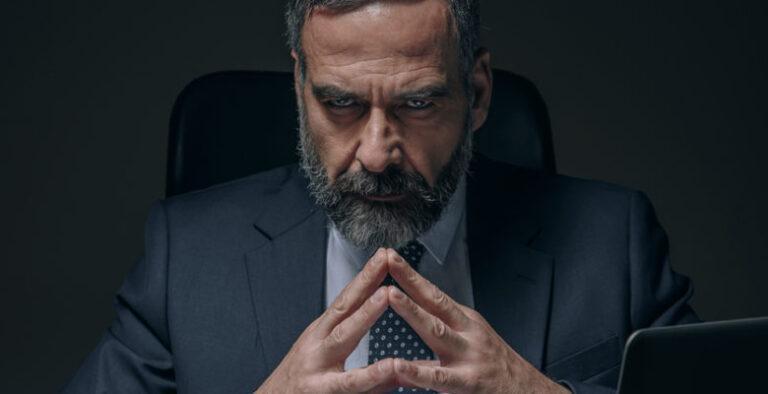Get full access to Outside Learn, our online education hub featuring in-depth yoga, fitness, & nutrition courses, when you
sign up for Outside+.
I sat scrunched in my black Jetta, waiting and watching as lithe white women walked past me, phones in one hand and Hydro Flasks in the other. I made note of their crisscrossed black tanks and compression leggings. Then I looked down at my loose black Ruth Bader Ginsberg t-shirt and Target leggings, feeling uncomfortable.
I was parked outside the yoga studio where I’d signed up for my first in-person beginner’s yoga class. The dashboard read 102 degrees, not taking into account Central Florida’s humidity, as I sat for 15 minutes, sweating and crying and wanting to see someone whose body took up space like mine.
My phone pinged. It was a text from my therapist. “Just breathe” punctuated with a red heart emoji. She knew me and my anxiety well; the three of us had been in a relationship for nearly a decade. Whenever I was about to do something outside my comfort zone, something monumental that I really wanted as another form of healing, she would note the day and time and send a quick therapeutic reminder that I’m stronger than I give myself credit for.
Mustering that strength and optimism, I got out of the car. I convinced myself that the yoga teacher would normalize the differences we all hold in our bodies and create a welcoming community, one that I would want to return to every Saturday. I trusted that if people truly went to yoga in search of something, I’d fit right in. After taking a big inhalation and an even bigger exhalation, I went inside.
My expectations versus my reality
For most of my adult life, there has been shame attached to how I see my body, its physicalities, and its limitations. I finally felt ready to rewrite my default narrative of self-effacement. I saw this as a step toward self-love. Yoga was going to be another part of my therapeutic process.
But as soon as I stood in that pristine lobby with women who looked so alike—and so unlike me—I started to default to my old internal narrative. Comparing myself to other women’s appearances and abilities is something I am quite good at. My BMI was at least twice those of the other women. Although I took pride in my flexibility (I could guide my left leg behind my head!), I knew from my at-home attempts at yoga that I struggled with even the basic Warrior poses because of my poor balance and injuries to my back, ankles, and knees.
I had hoped that my off-screen yoga experience would start with learning how to ground my feet and find balance. Then, within a few classes, I would graduate to “relaxing the shoulders down,” as I’d heard in my online classes, since I carry so much of my anxiety in my shoulders.
The early 20-something instructor—also a thin, able-bodied woman in an ab-baring cropped tank—prioritized the physical poses and offered no example of variations. There was limited emphasis on pranayama. Instead, she urged us to “tighten this” and “extend that.” I kept quietly inhaling with steady confidence that she would come over and redirect my body into something that felt safer and more achievable for my wobbly frame, easing my racing thoughts and pending tears.
When that didn’t happen, I started to panic. My negative self-talk hindered my ability to hear or look at anything or anyone else in the room. I came down onto my mat and remained in Child’s Pose until class was over.
I had intentionally chosen this instructor’s class because of its description: “Beginner-friendly, moderate vigor (no yoga experience needed).” Every word of this sounded supportive. But the instructor never acknowledged me or asked if I was okay, even when it was clear I was not. I left angry that she had unconsciously validated my shame.
That was four years ago. I have not returned to another in-person yoga class.
My struggle with accepting myself
I’ve always struggled with existing in an overweight body. I experience privilege because of my whiteness. However, as a queer woman with invisible disabilities, I have a familiarity with being othered. My collection of mental illnesses—chronic anxiety disorder, OCD, and depression—take a toll on my quality of life, and my therapist suggested yoga might offer some reprieve. I believed her.
I once admitted to my wife that I yearned to reconnect with my body. She wanted this release for me, too. She couldn’t understand my shame. It made her sad. “You are so beautiful,” she said. “I love everything about your body. Your creativity, intelligence, and grit. How deeply you feel things. How much you care for others. I wish you could give yourself that same care and love.”
I wished that for myself, too. So I turned to yoga seeking peace of mind and ease in my body. I wasn’t looking to change my body for aesthetic reasons. I was focused on my mental and physical health and longevity.
Othering has no place in learning
Before I attended the class, a few of my friends assured me that I would feel more relaxed once I was on the mat. They understood, as students and teachers of yoga, the responsibility of an instructor to meet each person where they are, especially in classes with yoga’s foundations as the focus.
Acutely talented instructors exist everywhere. I even know some personally. I expected my teacher to be cognizant of what it means to create a class that honors all bodies. It’s no different than when I taught beginning writing at the University of Central Florida. I was responsible for instructing students with varying abilities, identities, and histories. “Difference” was welcomed and desired in my classroom. I took pride in fostering a sense of belonging.
Yes, there are some professors whose pedagogies and practices fail to recognize the responsibility of embracing diversity in their classrooms. This reality makes me sad as students might leave the writing classroom believing their unique voices are not valued. Teachers must know what’s at stake if their ways of teaching and their content don’t represent the needs of all students.
The same goes for yoga instructors.
Bringing it all together
The word “yoga” means “yoke” or “to bring together.” It feels essential to the very definition of yoga that all bodies and abilities are able to come together in a yoga space and feel safely seen and heard.
It’s clear that there are teachers who lack the knowledge, concern, and awareness of what “everyone” means. It’s not clear whether they understand the damage done by their lack of understanding.
The blame shouldn’t be placed squarely on the instructors themselves. Some may lack the necessary training around how to hold space for all of their students. Teaching the tenets of accessibility in only 200 hours of training seems unrealistic. Maybe my expectations that a firm understanding of inclusivity in the studio is somewhat unrealistic given the limited amount of basic training required for yoga teachers.
What exactly does inclusivity look like?
I’ve seen arguments that a “plus size” yoga class is needed in every studio so “all bodies” could be seen and receive support. I respond to this with a question: Is it wrong or unrealistic to expect yoga teachers to see all bodies and identities and want to help them?
To me, separation mirrors more othering. Most marginalized groups already contend with a cultural climate that fosters exclusion. Such practices would only exacerbate the problem.
What I need is a yoga instructor who values all types of bodies and abilities in the classroom. I am looking for someone who can create a transformative practice that honors my own unique body and mind. I want an instructor who can gently guide me through yogic breathing and various accessible poses. I don’t want special treatment. Just a quick adjustment and a feeling that I matter, too.
Of course, slender bodies belong in a yoga room. But so do other bodies—all kinds of bodies. That’s the problem: “Everyone” all too often does not truly equate to inclusivity. If we students don’t advocate for our own bodies to be rooted in inclusivity, who will?
My yoga story continues
It’s the second week of the new year. My anxiety is getting worse, and I’m tired of feeling unwell. I need movement. My therapist is emphatic that I need to find another yoga community because most days I still operate according to the three-word Covid mantra “Just stay home.”
I feel isolated. I don’t want to hide in my car again. I want to reclaim my mental and physical health. I want to feel strong and loved when I finally ease into Warrior I. I also want to feel supported.
Maybe one day I will begin my in-studio yoga practice again. Until then, I will remain on Zoom.
About our contributor
Ali Smith is a nonfiction writer, educator, freelance editor, and lifelong learner. Her advocacy work focuses on mental health awareness and addressing equity issues in education. Currently, she is working on a collection of creative nonfiction essays surrounding memory, loss, identity, the body as “home,” healing, and growing up in Central Florida. Her weekly Mindful Writing Workshop class and swimming are her church. Constantly in search of community, she is returning to in-person yoga very soon. Follow her at @a.denee_light_bright.
This content was originally published here.




















